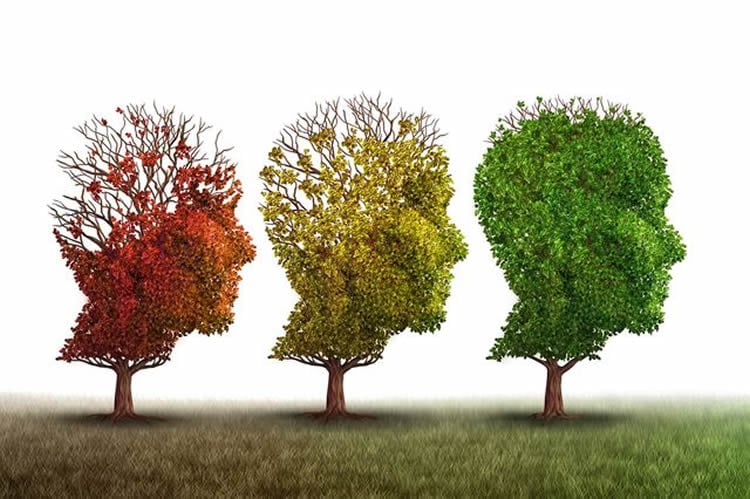Summary: Researchers describe using low current electrical stimulation on specific areas of the brain to enhance distinct memories.
Source: UCLA.
Neuroscientists at the David Geffen School of Medicine at UCLA have discovered precisely where and how to electrically stimulate the human brain to enhance people’s recollection of distinct memories. People with epilepsy who received low-current electrical pulses showed a significant improvement in their ability to recognize specific faces and ignore similar ones.
Eight of nine patients’ ability to recognize the faces of specific people improved after receiving electrical pulses to the right side of the brain’s entorhinal area, which is critical to learning and memory. However, electrical stimulation delivered to the left side of the region, tested on four other people, resulted in no improvement in the patient’s recall.
BACKGROUND
The study builds on 2012 UCLA research published in the New England Journal of Medicine demonstrating that human memory can be strengthened by electrically stimulating the brain’s entorhinal cortex.
METHOD
The researchers followed 13 people with epilepsy who had ultrafine wires implanted in their brains to pinpoint the origin of their seizures. The team monitored the wires to record neuron activity as memories were formed, then sent a specific pattern of quick pulses back into the entorhinal area.

Using the ultrafine wires allowed researchers to precisely target the stimulation but use a voltage as low as one-tenth to one-fifth as strong as had been used in previous studies.
IMPACT
The study suggests that even low currents of electricity can affect the brain circuits that control memory and human learning. It also illustrates the importance of precisely targeting the stimulation to the right entorhinal region. Other studies that applied stimulation over a wide swath of brain tissue have produce conflicting results.
Electrical stimulation could offer promise for treating memory disorders like Alzheimer’s disease.
The study was led by Dr. Itzhak Fried and Nanthia Suthana of the UCLA departments of neurosurgery and psychiatry, in collaboration with Emily Mankin, Ali Titiz, Zahra Aghajan, Dawn Eliashiv, Natalia Tchemodanov, Uri Maoz, John Stern, Michelle Tran, Peter Schuette and Eric Behnke, all of UCLA; and Michael Hill of UCLA and Caltech.
Funding: The study was funded by the National Institute of Neurological Disorders and Stroke, the A.P. Giannini Foundation, the Defense Advanced Research Projects Agency, the G. Harold and Leila Y. Mathers Charitable Foundation and the Swiss National Science Foundation.
Source: Elaine Schmidt – UCLA
Publisher: Organized by NeuroscienceNews.com.
Image Source: NeuroscienceNews.com image is adapted from the UCLA news release.
Original Research: Full open access research for “Theta-burst microstimulation in the human entorhinal area improves memory specificity” by Ali S Titiz, Michael R H Hill, Emily A Mankin, Zahra M Aghajan, Dawn Eliashiv, Natalia Tchemodanov, Uri Maoz, John Stern, Michelle E Tran, Peter Schuette, Eric Behnke, Nanthia A Suthana, and Itzhak Fried in eLife. Published online October 24 2017 doi:10.7554/eLife.29515
[cbtabs][cbtab title=”MLA”]UCLA “Weak Electrical Signal Used to Stimulate Brain and Improve Memory.” NeuroscienceNews. NeuroscienceNews, 25 October 2017.
<https://neurosciencenews.com/memory-electrical-stimulation-7817/>.[/cbtab][cbtab title=”APA”]UCLA (2017, October 25). Weak Electrical Signal Used to Stimulate Brain and Improve Memory. NeuroscienceNews. Retrieved October 25, 2017 from https://neurosciencenews.com/memory-electrical-stimulation-7817/[/cbtab][cbtab title=”Chicago”]UCLA “Weak Electrical Signal Used to Stimulate Brain and Improve Memory.” https://neurosciencenews.com/memory-electrical-stimulation-7817/ (accessed October 25, 2017).[/cbtab][/cbtabs]
Abstract
Theta-burst microstimulation in the human entorhinal area improves memory specificity
The hippocampus is critical for episodic memory, and synaptic changes induced by long-term potentiation (LTP) are thought to underlie memory formation. In rodents, hippocampal LTP may be induced through electrical stimulation of the perforant path. To test whether similar techniques could improve episodic memory in humans, we implemented a microstimulation technique that allowed delivery of low-current electrical stimulation via 100 μm-diameter microelectrodes. As thirteen neurosurgical patients performed a person recognition task, microstimulation was applied in a theta-burst pattern, shown to optimally induce LTP. Microstimulation in the right entorhinal area during learning significantly improved subsequent memory specificity for novel portraits; participants were able both to recognize previously-viewed photos and reject similar lures. These results suggest that microstimulation with physiologic level currents—a radical departure from commonly used deep brain stimulation protocols—is sufficient to modulate human behavior and provides an avenue for refined interrogation of the circuits involved in human memory.
“Theta-burst microstimulation in the human entorhinal area improves memory specificity” by Ali S Titiz, Michael R H Hill, Emily A Mankin, Zahra M Aghajan, Dawn Eliashiv, Natalia Tchemodanov, Uri Maoz, John Stern, Michelle E Tran, Peter Schuette, Eric Behnke, Nanthia A Suthana, and Itzhak Fried in eLife. Published online October 24 2017 doi:10.7554/eLife.29515






